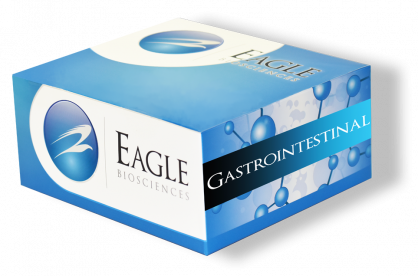Giardia Iamblia Antigen ELISA Assay Kit
Giardia Iamblia Antigen ELISA Assay Kit Developed and Manufactured in the USA
Size: 1×96 wells
Sensitivity: Cut-off
Incubation Time: 2 hours
Sample Type: Stool
Sample Size: 50 mg
Alternative Names: Giardia Iamblia Antigens ELISA, Fecal Giardia Iamblia Antigen ELISA
For Research Use Only
Controls Included
Assay Background
Giardia lamblia (also known as Giardia intestinalis) has a characteristic tear-drop shape and measures 10-15 µm in length. It has twin nuclei and an adhesive disk which is a rigid structure reinforced by supelicular microtubules. There are two median bodies of unknown function, but their shape is important for differentiating between species. There are 4 pairs of flagella, one anterior pair, two posterior pairs and a caudal pair. These organisms have no mitochondria, endoplasmic reticulum, golgi, or lysosomes. Giardia has a two-stage life cycle consisting of trophozoite and cyst. The life cycle begins with ingested cysts, which release trophozoites (10-20 µm x 5-15 µm) in the duodenum. These trophozoites attach to the surface of the intestinal epithelium using a ventral sucking disk and then reproduce by binary fission. The trigger for encystment is unclear, but the process results in the inactive, environmentally resistant form of Giardia — a cyst (11-14 µm x 7-10 µm) that is excreted in feces.
Giardiasis is a diarrheal illness caused by Giardia lamblia, after ingestion of Giardia cysts. Once a person has been infected with Giardia, the parasite lives in the intestine and is passed in the stool. Millions of germs can be released in a bowel movement from an infected human or animal. Giardia is found in soil, food, water, or surfaces that have been contaminated with the feces from infected humans or animals. Because the parasite is protected by an outer shell, it can survive outside the body and in the environment for long periods of time.
Because it is spread world-wide, Giardia lamblia has become one of the most important causes of chronic diarrhea. About 15-20% of children under age ten years and 19% of male homosexuals have been infected. Giardia infection can cause a variety of intestinal symptoms either acute or chronic, which include diarrhea, gas or flatulence, greasy stools that tend to float, stomach cramps, upset stomach or nausea. These symptoms may lead to weight loss and dehydration. Some people with giardiasis have no symptoms at all. Those asymptomatic cases still shed Giardia cysts. Generally, symptoms of giardiasis begin 1 to 2 weeks after becoming infected and they may last 2 to 6 weeks.
Products Related to Giardia Iamblia Antigen ELISA
Cryptosporidium parvum Antigen ELISA Assay Kit
Rotavirus Antigen ELISA Assay Kit
Adenovirus Antigen ELISA Assay Kit


